96 events in 2019
-
Seminar
Haloes at the low-mass end in wino dark matter
October 21 (Mon) at 13:00 - 15:00, 2019
Toyokazu Sekiguchi (Research Center for the Early Universe (RESCEU), The University of Tokyo)
Neutral wino is a natural candidate of dark matter in split-supersymmetry. Indirect detection is a promising probe of wino dark matter, with its annihilation enhanced non-perturvatively (i.e. Sommerfeld enhancement). In theoretical prediction, halo formation at the low-mass end is a key ingredient. For this purpose, we investigate kinetic decoupling of wino dark matter and consequent dark matter density perturbations. We show that inelastic processes involving charged wino, which are relevant for kinetic equilibrium at late times, shuts off abruptly. This results in boosted acoustic peaks in density power spectrum at horizon scales around the kinetic decoupling. Based on an analytic modeling of subhalo evolution, we estimate the subhalo mass function of (dwarf) galaxy-sized haloes and effects on the annihilation boost factor. We also discuss application of our analysis to SU(2)_L multiplet minimal dark matter.
Venue: Seminar Room #160
Event Official Language: English
-
Seminar

Introduction to 1QBit Open Software QEMIST "Quantum-Enabled Molecular ab Initio Simulation Toolkit"
October 17 (Thu) at 13:30 - 15:00, 2019
Shunji Matsuura (Fundamental Researcher, Quantum Simulation Division, 1QBit, Canada)
Venue: #433, Main Research Building
Event Official Language: English
-
Seminar
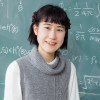
Dark matter search in extended dwarf spheroidal galaxies with CTA
October 11 (Fri) at 14:00 - 15:00, 2019
Nagisa Hiroshima (Postdoctoral Researcher, RIKEN Interdisciplinary Theoretical and Mathematical Sciences Program (iTHEMS))
The nature of dark matter (DM) is still a big mystery. Among the varieties of candidates, Weakly Interacting Massive Particle (WIMP) is one of the most promising ones. Gamma-ray observations of dwarf spheroidal galaxies (dSphs) by Fermi satellites put the strongest constraints at mDM<~ a few hundreds of GeV. In the near future, Cherenkov Telescope Array (CTA) starts its operations and expect to probe WIMP of mDM>~O(1)TeV. Different from previous experiments, spatial distributions of DM in dSphs are resolved with CTA. In this talk, I explain how it affects our accessibility to DM annihilation cross-section.
Venue: Seminar Room #132
Event Official Language: English
-
Workshop
KUIAS-Heidelberg-RIKEN iTHEMS joint WS "Mathematical Sciences and Medicine"
October 10 (Thu) at 10:30 - 18:00, 2019
Venue: SUURI-COOL (Kyoto)
Event Official Language: Japanese
-
Seminar
Finite N corrections to the superconformal index from D3-brane analysis in AdS_5/CFT_4
October 8 (Tue) at 15:30 - 17:00, 2019
Reona Arai (Ph.D. Student, Tokyo Institute of Technology)
In the context of the AdS/CFT, the Type IIB superstring theory on AdS_5 \times SE_5 corresponds to an N=1 quiver gauge theory, where SE_5 is a five-dimensional Sasaki-Einstein manifold. We study this correspondence by using the superconformal index, which contains the information of the BPS spectrum in the theory. It is known that the index of the large N limit is evaluated by the Kaluza-Klein modes on SE_5 and the agreement with CFT results was confirmed in many examples. In this talk, we consider the finite N corrections to the index on the gravity side as a next step. To do this, we focus on a single D3-brane wrapped around a three-cycle on SE_5. Because there are in general several three-cycles on SE_5, we need to sum up contributions of these single D3-branes. By using the D3-brane analysis, we propose a prescription to calculate the finite N corrections to the index. We explain our prescription through some examples and see the agreement with the CFT results calculated by the localization method.
Venue: Seminar Room #160
Event Official Language: English
-
Workshop
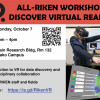
Workshop on Virtual Reality[Session 1]
October 7 (Mon) at 13:00 - 16:00, 2019
Gilles Ferrand and Don Warren will run a workshop on using virtual reality (VR) for data visualization and research. Anyone from any RIKEN campus, and any field of study, is welcome. We want to build a cross-disciplinary group of people with a shared interest in VR, and to apply this tool to a broad range of data types and topics. Please check the workshop website for up-to-date information !
Venue: Seminar Room #132
Event Official Language: English
-
Colloquium
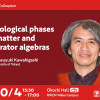
Topological phases of matter and operator algebras
October 4 (Fri) at 15:30 - 17:00, 2019
Yasuyuki Kawahigashi (Senior Visiting Scientist, RIKEN Interdisciplinary Theoretical and Mathematical Sciences Program (iTHEMS) / Professor, Graduate School of Mathematical Sciences, The University of Tokyo)
Topological phases of matter are hot topics in recent physics and related to a wide range of mathematical fields. I will talk about their aspects related to operator algebras. Our emphasis will be on theory of tensor categories which describe interactions of anyons. This theory plays an important role in topological quantum computations. In theory of operator algebras, Jones initiated theory of subfactors and discovered the Jones polynomial, a new topological invariant for knots as an application. We apply this theory to mathematical studies of anyons.
Venue: Okochi Hall
Broadcast:R511, Computational Science Research Building / SUURI-COOL (Kyoto) / SUURI-COOL (Sendai)
Event Official Language: English
-
Seminar
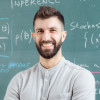
A new lamppost in dark matter searches: Composite Dark Matter
October 1 (Tue) at 10:00 - 18:00, 2019
Enrico Rinaldi (Research Part-time Worker Ⅰ, RIKEN Interdisciplinary Theoretical and Mathematical Sciences Program (iTHEMS))
In the search for the nature of dark matter many particle physics models are proposed. Models originating from a new strongly coupled dark sector, similar to QCD and Nuclear Physics, give rise to Composite Dark Matter particles. These models are hard to study, but they have a very interesting phenomenology with clear signals that are distinct from the usual WIMP candidates. To make robust predictions in Composite Dark Matter models one often needs to investigate non-perturbative effects due to the strong dynamics. In my talk I will explain how Lattice Field Theory methods and numerical simulations are well suited for this task and contribute to a solid uncertainty quantification. A variety of detection signals can be studied with lattice simulations, from dark matter self interactions to interactions with regular matter and even signals of dark phase transitions generating primordial gravitational waves.
Venue: #424-426, Main Research Building
Event Official Language: English
-
Workshop
2nd MeV Gamma-ray Astrophysics Workshop
September 26 (Thu) - 27 (Fri), 2019
Venue: Faculty of Science Bldg.1, School of Science, The University of Tokyo, Hongo Campus
Event Official Language: Japanese
-
Seminar
Angular power spectrum analysis on current and future high-energy neutrino data
September 18 (Wed) at 14:00 - 15:00, 2019
Ariane Dekker (Faculty of Science, University of Amsterdam, Netherlands)
The astrophysical neutrino events that have been measured in the last couple of years show an isotropic distribution on the sky. To constrain the contribution of source populations to the observed neutrino sky, we consider isotropic and anisotropic components of the diffuse neutrino data. We simulate through-going muon neutrino events by applying statistical distributions for the fluxes of extra-galactic sources and investigate the sensitivities of current (IceCube) and future (IceCube-Gen2 and KM3NeT) experiments. I will show that the angular power spectrum is a powerful probe to assess the angular characteristics of neutrino data and demonstrate that we are already constraining rare and bright sources with current IceCube data. In addition, I will investigate the decay and annihilation of very heavy dark matter as a potential neutrino source suggested by the excess in HESE data. We apply our angular power spectrum analysis to HESE data for different channels, allowing us to interpret the observed neutrino sky and perform a sensitivity forecast.
Venue: #160, 1F, Main Research Building
Event Official Language: English
-
Seminar
iTHEMS Biology Seminar
September 13 (Fri) at 15:00 - 17:20, 2019
Hiroyuki Kubota (Professor, Medical Institute of Bioregulation, Kyushu University)
Yasufumi Uezu (Researcher, Sensory And Motor Research Group, NTT Communication Science Laboratories)Timetable 15:00-16:00 Hiroyuki Kubota (Kyushu Univ.) 16:00-16:20 Break 16:20-17:20 Yasufumi Uezu (NTT) Time: 15:00-16:00 Speaker: Hiroyuki Kubota (Kyushu Univ.) Title: Regulation of insulin action by temporal patterns of insulin Abstract: Cells respond to various extracellular stimuli through a limited number of signaling pathways. One strategy to process such stimuli is to code the information into the temporal patterns of molecules. Almost all hormones exhibit distinct temporal patterns and the importance of their patterns has been reported. However, the mechanisms of how hormones regulate downstream molecules depending on their temporal patterns remain unknown. We focused on insulin which plays crucial roles on glucose homeostasis and shows several temporal patterns in vivo. In this study, we show how the Insulin signaling pathway processes the information encoded into the temporal patterns of blood insulin using a cultured cell line and mice. We found that insulin patterns selectively regulate the insulin-AKT pathway, metabolites, and mRNAs. Mathematical modeling revealed the mechanisms via differences in network structures and from sensitivity and time constants. Given that almost all hormones exhibit distinct temporal patterns, temporal coding may be a general principle of system homeostasis by hormones. Time: 16:20-17:20 Speaker: Yasufumi Uezu (NTT) Title: Source-filter interaction brings various representation in speech and singing voice Abstract: Speech plays a very important role in human communication. The source-filter interaction, a model that takes into account the actual speech production process, assumes that the sound source generation mechanism and the vocal-tract filter are not independent, but affect each other physiologically and acoustically. It is known that the source-filter interaction brings about non-linearity of speech and singing, such as singing voice with a loud volume and wide pitch range like an opera singer, or voice register transition where the vocal suppression and/or the voice pitch jump occurs. I would like to introduce my researches targeting non-linear vocalization phenomena due to the source-filter interaction and results of measuring and analyzing the time waveform of speech sound and vocal-fold vibrations through measurement experiments.
Venue: #424-426, Main Research Building
Event Official Language: Japanese
-
Seminar
Introduction to quantum many-body system
September 5 (Thu) - 6 (Fri), 2019
Hosho Katsura (Associate Professor, Department of Physics, Graduate School of Science, The University of Tokyo)
Venue: #535-537, Main Research Building / #435-437, Main Research Building
Event Official Language: Japanese
-
Lecture
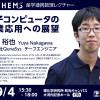
Outlook for Industrial Applications of Quantum Computers
September 4 (Wed) at 15:30 - 18:00, 2019
Yuya Nakagawa (Chief Engineer, QunaSys Inc.)
Venue: Okochi Hall
Broadcast:R311, Computational Science Research Building / SUURI-COOL (Kyoto) / SUURI-COOL (Sendai)
Event Official Language: Japanese
-
Seminar
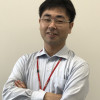
Introduction to Quantum Annealing: from Fundamentals to Applications
September 2 (Mon) - 3 (Tue), 2019
Hirotaka Irie (Visiting Scientist, RIKEN Interdisciplinary Theoretical and Mathematical Sciences Program (iTHEMS) / Assistant Manager, DENSO Corporation)
Sep. 2 (Mon) 10:30-12:00, 13:30-15:00, 15:30-17:00 Lecture 1: What is quantum annealing and quantum computation? Lecture 2: Quatum Ising models as flux-qubit degree of freedom Lecture 3: Basic usage of quantum annealer Sep. 3 (Tue) 10:30-12:00, 13:30-15:00, 15:30-17:00 Lecture 4: Optimization problems and computational complexity Lecture 5: Real-world applications Lecture 6: Some other topics Room: 435-437 (main research building): Sep.2 (Mon) am 424-426 (main research building): Sep.2 (Mon) pm & Sep.3 (Tue) am+pm Abstract: Quantum annealing is a quantum-computational scheme which tackles computationally hard optimization problems. Its quantum-mechanically implemented machine, called quantum annealer, is commercially manufactured by D-Wave Systems, Inc., and is currently available with more than 2000 quantum bits. In this two-day lecture, I would like to discuss fundamental aspects of quantum annealing (1st day) and its real-world applications (2nd day). In particular, I try to overview the current status of the machine and several problems which we should theoretically overcome. In the first day, I will start with discussing what is quantum annealing and then review how quantum Ising model is implemented with flux-qubit degree of freedom. Later on, I will discuss the basic usage of the quantum annealer as a preparation for applications. In the second day, I will first summarize several classes of optimization problems and their computational complexity, and then discuss examples of real-world applications of quantum annealing. Finally, if I have enough time, I would like to discuss other related topic on quantum annealing.
Venue: #435-437, Main Research Building / #424-426, Main Research Building
Event Official Language: English
-
Workshop

Math-Life Workshop
August 19 (Mon) - 20 (Tue), 2019
Organizers Masaharu Nagayama (MSC, Hokkaido Univ.) Tetsuo Hatsuda (iTHEMS, RIKEN) Hiroshi Suito (AIMR, Tohoku Univ.) Takayuki Sakajyo (SACRA, Kyoto Univ.)
Venue: 1F Seminar Room, Frontier Research in Applied Sciences Building, Hokkaido Univ.
Event Official Language: Japanese
-
Seminar

Physics of Gamma-Ray Bursts: Emission Mechanism, Particle Acceleration, Nucleosynthesis, and Gravitational Waves
August 17 (Sat) at 12:00 - 13:00, 2019
Shigehiro Nagataki (Deputy Program Director, RIKEN Interdisciplinary Theoretical and Mathematical Sciences Program (iTHEMS) / Chief Scientist, Astrophysical Big Bang Laboratory, RIKEN Cluster for Pioneering Research (CPR))
Gamma-Ray Bursts (GRBs) are very powerful, special explosions of massive stars. In the explosions, highly relativistic jets are launched from progenitor stars and lots of gamma-rays are emitted from the jets. It is also suggested by gravitational wave detection with follow-up observations that (short duration) GRBs are triggered by neutron star mergers (NSMs). In this talk, physics of GRBs are introduced with some of our recent studies. I would like to introduce how the relativistic jets will emit bunch of gamma-rays, and how particle acceleration happens in the relativistic jets. I also would like to introduce our recent studies on r-process nucleosynthesis & gravitational wave emission at NSMs. Location: 50A-5132
Venue: Lawrence Berkeley National Laboratory (Berkeley, California)
Event Official Language: English
-
Lecture
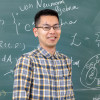
SUURI-COOL (Kyushu) Lecture
July 31 (Wed) - August 2 (Fri), 2019
Takumi Doi (Senior Research Scientist, RIKEN Interdisciplinary Theoretical and Mathematical Sciences Program (iTHEMS) / Senior Research Scientist, Quantum Hadron Physics Laboratory, RIKEN Nishina Center for Accelerator-Based Science (RNC))
SUURI-COOL (Kyushu) at the Ito-campus of Kyushu Univ. will be launched on July 31, 2019. As a first event at SUURI-COOL (Kyushu), the following lecture by Takumi Doi (RIKEN Nishina Center/iTHEMS) will be held. Feel free to join if you will be around Ito-campus. Nuclei, many-body systems of baryons as protons and neutrons, are ultimately consist of elementary particles of quarks and gluons and their properties are governed by quantum chromodynamics (QCD). Recently, a new theoretical method is developing in lattice QCD, the first-principles calculation of QCD, and the new era is dawning where nuclear physics is constructed directly based on QCD. In this lecture, I first introduce the formulation of lattice QCD. I will then discuss the theoretical foundation and the latest numerical results about the lattice QCD study of hadron interactions, the key quantities to construct nuclear physics from QCD. I will also give a lecture on computational science, in particular, about supercomputers.
Venue: SUURI-COOL (Kyushu)
Event Official Language: English
-
Seminar
Complex analysis on a neighborhood of a complex submanifold and its applications
July 30 (Tue) at 16:00 - 18:10, 2019
Takayuki Koike (Lecturer, Department of Mathematics, Graduate School of Science, Osaka City University)
Plan of the seminar: we separate each talk into two. In the first 60 minutes the speaker gives an introductory talk for non-mathematicians. After a short break, the second 60 minutes is spent for a bit more detailed talk for mathematicians (working in other areas). We welcome you joining both parts of the seminar or only the first/second half. Abstract: We explain our recent study on the complex analytic structure of a small tubular neighborhood of a complex submanifold, which is based on T. Ueda's classification theory. We also explain how to apply them to: (i) a study on (non-) existence of a smooth Hermitian metric on a nef line bundle over a projective manifold with semi-positive curvature, and (ii) a study on non-projective and non-Kummer K3 surfaces.
Venue: Seminar Room #160
Event Official Language: English
-
Workshop
RIMS-iTHEMS joint WS on "Math of Jets"
July 29 (Mon) - 31 (Wed), 2019
Co-hosted by RIMS Kyoto University and iTHEMS RIKEN.
Venue: Kyoto University, Main Campus Research Bldg No 15, #201
Event Official Language: Japanese
-
External Event
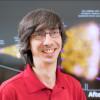
Interstellar Memes
July 25 (Thu) at 20:00 - 21:30, 2019
Don Warren (Research Scientist, RIKEN Interdisciplinary Theoretical and Mathematical Sciences Program (iTHEMS))
Memes are to cultures what genes are to people: ideas, behaviors, or styles that are transmitted within the culture and can propagate or die out. The universe is a big place. How much of it knows about Grumpy Cat? Tale of Genji? Earth? Cost: JPY1,500 including a drink
Venue: Good Heavens Bar (2F 5-32-5 Daizawa, Setagaya-ku, Tokyo 155-0032)
Event Official Language: English
96 events in 2019
Events
Categories
series
- iTHEMS Colloquium
- MACS Colloquium
- iTHEMS Seminar
- iTHEMS Math Seminar
- DMWG Seminar
- iTHEMS Biology Seminar
- iTHEMS Theoretical Physics Seminar
- Information Theory Seminar
- Quantum Matter Seminar
- ABBL-iTHEMS Joint Astro Seminar
- Math-Phys Seminar
- Quantum Gravity Gatherings
- RIKEN Quantum Seminar
- Quantum Computation SG Seminar
- Asymptotics in Astrophysics Seminar
- NEW WG Seminar
- GW-EOS WG Seminar
- DEEP-IN Seminar
- ComSHeL Seminar
- Lab-Theory Standing Talks
- QFT-core Seminar
- Quantum Foundation Seminar
- STAMP Seminar
- QuCoIn Seminar
- Academic-Industrial Innovation Lecture
- Number Theory Seminar
- Berkeley-iTHEMS Seminar
- iTHEMS-RNC Meson Science Lab. Joint Seminar
- RIKEN Quantum Lecture
- Theory of Operator Algebras
- iTHEMS Intensive Course-Evolution of Cooperation
- Introduction to Public-Key Cryptography
- Knot Theory
- iTHES Theoretical Science Colloquium
- SUURI-COOL Seminar
- iTHES Seminar
